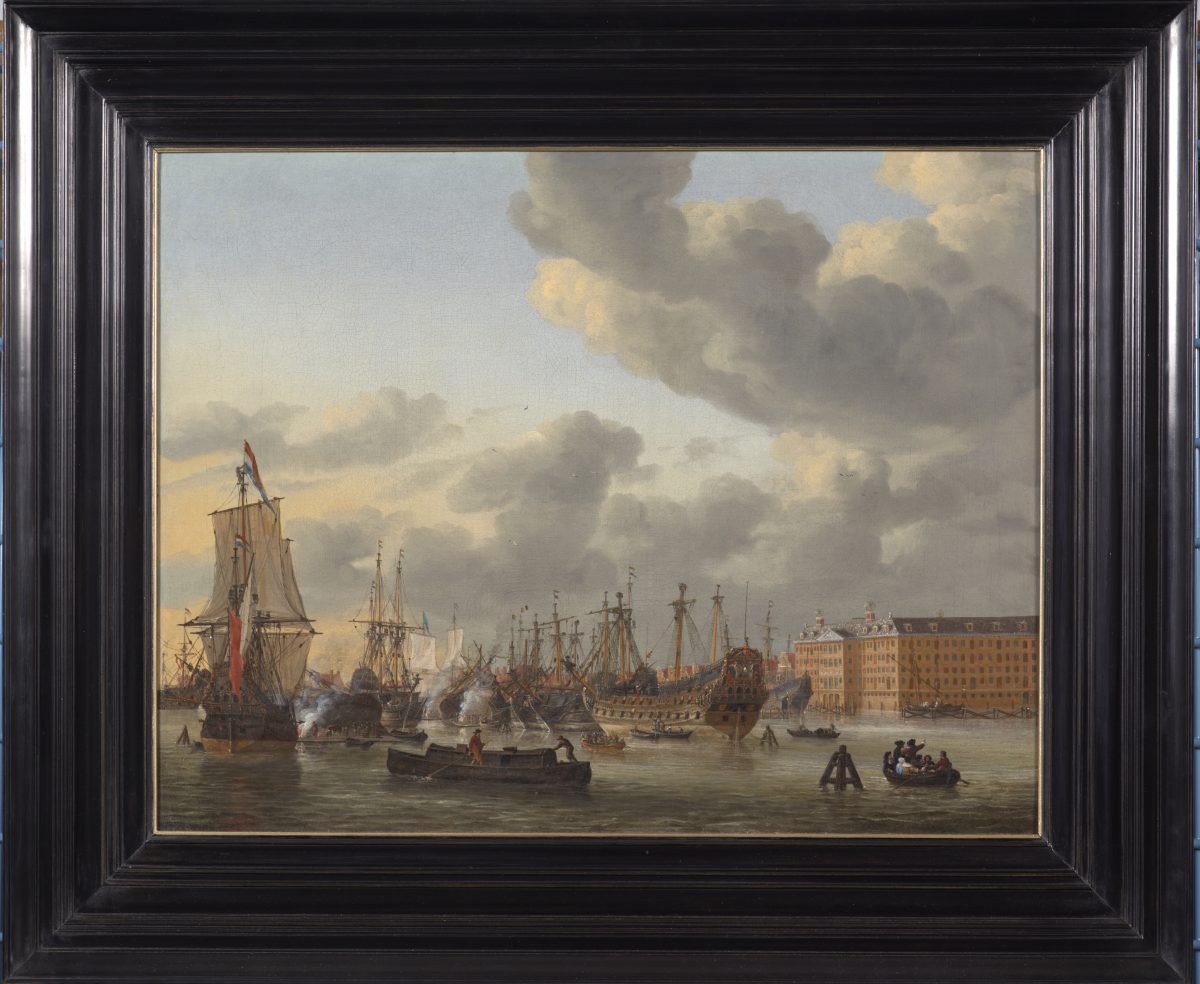This is a very special part of Amsterdam: the Oosterdok (East Dock), situated to the east of Central Station between the Eastern Islands and the Prins Hendrikkade (Prince Henry Quay). 1000 years ago, this area was completely submerged: the site where Amsterdam stands today used to be nothing more than a huge peat bog. The storm surges in the 12th century further broadened and deepened the salty waters of the River IJ, which may well be what brought the first waters to the Oosterdok area.
Amsterdam: Connected by water
People sought safety from flooding and built a dam around the mouth of the River Amstel, hence Amster Dam. The strategically advantageous location resulted in rapid development in the area. It was linked to both inland waterways and larger bodies of water, such as the River Amstel, the River IJ, and the former Zuiderzee, making the city a powerhouse in the shipping industry. However, the city did not truly blossom until 1275, when the decision was made to allow residents to navigate the Dutch rivers free of charge, effectively issuing everybody with a shipping licence! Amsterdam became a bustling port and trade city, with the majority of this enterprise concentrating around the Dam, the Damrak, and the top of the Zeedijk. The inner harbour was constructed at the northern end of the Amstel, where fishing boats and trade cogs mingled every day.
Shipbuilding boom
The city was growing and developing at breakneck speed, and nautical activities were slowly spreading towards the River IJ. The early Amsterdammers were eager to capitalize on lucrative overseas trade opportunities, and to achieve this ambition, only the biggest and seaworthiest ships would make the grade. By the end of the sixteenth century, the heart of the shipbuilding industry began to move towards the more eastern of the central districts: Marken, Uilenburg, Rapenburg, and Vlooienburg. The Admiralty, as the Dutch Navy was then known, established itself on Uilenburg. The Peperwerf(Pepper Yard) – the first shipyard built by the Dutch East India Company – was constructed on Rapenburg. The Eastern Islands were built in the middle of the 17th century: the period known as the Dutch Golden Age. Eventually, the Admiralty established itself on Kattenburg Island, the Dutch East India Company set up shop on OostenburgIsland, and the private shipyards moved to Wittenburger Island.
Het Scheepvaartmuseum (The National Maritime Museum)
The founding of the Dutch East India Company in 1602 brought a second wave of prosperity to the city. There was a much greater demand for ships capable of sailing to and from Asia, substantial numbers of which were built in Amsterdam’s shipyards. It soon became evident that the trade fleets had to be protected by a navy. Following the First Anglo-Dutch War (1652-1654), the Admiralty sought to establish its own naval fleet. It needed a base with a storage depot, workshops, and its own shipyard. In 1655, the foundation stone was laid for the ‘’Lands Zeemagazijn’: the Admiralty’s naval base and the current site of Het Scheepvaartmuseum(The Maritime Museum). Slowly, the water increasingly gave way to the land and the IJbecame narrower as shipbuilding activities expanded.
Nautical district
In 1828, the decision was made to construct dikes and sluices around the Oosterdokin order to make the harbour accessible to ships even at low tide. As a result, the Oosterdokbecame a closed-off inland waterway. The opening of the new Oosterdokwas a memorable event, as the first ship to sail to the Oosterdokthrough the new ‘Groote Sluis’(Great Sluice) was the J.C.J. van Speijk. This ship was part of the funeral cortège of Captain Lieutenant Commander Jan van Speijk, who died in Antwerp and was being taken by ship to his final resting place in the mausoleum at the Nieuwe Kerkchurch. Since its inception, the Oosterdokhas played host to a multitude of unique moments, people, companies, and institutions, including the Royal Netherlands Steamboat Company and the Nautical College. However, the Golden Age of the Oosterdokfaded at the end of the 19th century as ever-larger steamboats from both the Netherlands and abroad demanded new waterways and harbours. The skippers wanted open waters, deeper waterways, longer quays, and train links. As a result, nautical enterprise slowly ebbed away from the Oosterdok. But every cloud has a silver lining! In 1960, thanks to the construction of the IJ tunnel, Amsterdammers enjoyed long summer days and nights on theOosterdok’stemporary beach on the Prins Hendrikkade, transforming the water into an aquatic playground for local residents. The city council decided to develop the Oosterdokas a residential area, and the shipping industry gave way to apartment buildings.
Maritime heritage in the Museum Harbour
In the winter of 1983, something amazing happened: a large group of enthusiastic owners of historic cargo ships ‘occupied’ the eastern IJtunnel pier and moored their ships opposite Het Scheepvaartmuseum. In1985, these twenty seagoing monuments formed an association named the Museum Harbour. Here, passionate enthusiasts of marine heritage could meet and marvel at these maritime masterpieces. To this very day, private owners honour these historic freighters by living on them, maintaining them, and restoring them wherever necessary. This ensures the preservation of both the heritage and craftsmanship of the Oosterdok. Situated so close to The Maritime Musuem, the goal of the Museum Harbour association is to allow people to experience Dutch maritime history for themselves via knowledge sharing and events. The Oosterdokis a bustling haven of culture that is open to the public every hour of every day. Take a walk along the quay and read the signs to get a taste of the unique history of these ships, which bring maritime memories of yesteryear to life for visitors and residents alike.
